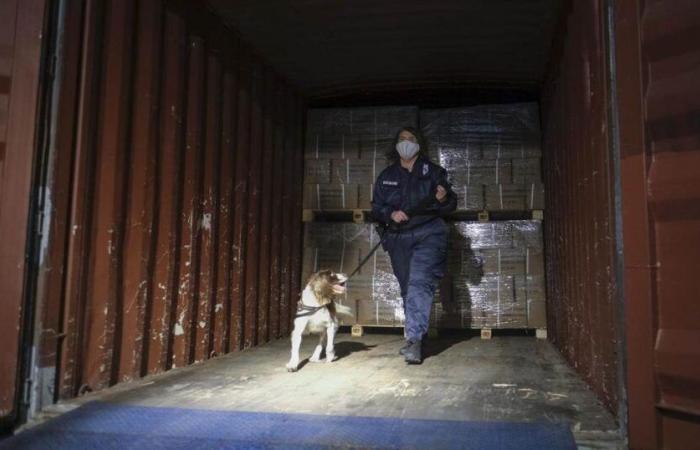Drug trafficking has taken on an unprecedented scale in the world, including in Europe, which is generating an increase in violence. The Belgian port of Antwerp is the first gateway for cocaine into Europe, along with that of Rotterdam. Reporting.
Gigantic terminals, walls of containers, cranes, hangars, hundreds of trucks traveling for kilometers: the port of Antwerp is a real maze.
“Seven and a half million containers pass through the port every year,” said Sarah van Cottem, head of customs communications, on Friday on the show Tout un monde. “All are subject to a risk analysis,” she explains, “but only 1.5% pass through the rays of a scanner and an even smaller number are searched.”
>> Read also: The Belgian port of Antwerp has become the European drug hub
Scan containers at risk
“We have new equipment. The goal is to scan all containers at risk, those coming from Latin America or West Africa,” specifies the spokesperson. Customs services hope to check 50,000 containers this year, still far from their long-term objective of checking 350,000.
Customs officers are examining containers filled with solar panels, for example, because they recently found cannabis hidden in this type of delivery, says Perter, a port employee. “There are so many signs arriving in Europe; traffickers think they can easily slip through the cracks,” he says.
Cocaine in fresh fruit shipments
The latter also hide drugs in cargoes of cassava, cocoa, teak wood, cars, clothing, coal, etc. But they often choose deliveries of fresh fruit, specifies customs officer Florence Angelici. Two reasons for this: many fruits are sent from Latin America and it is a commodity that must be delivered quickly.
In 2023, Belgian customs seized a total of 116 tonnes of cocaine. This year the numbers are down, but the drugs continue to arrive in Europe, as they also pass through other European ports. The authorities have increased their controls, but they have not succeeded in stopping the violence of the traffickers.
Brussels has seen an increase in shootings in recent months. In Antwerp, conflicts mainly take place between groups of traffickers, recovering large quantities of goods. And sometimes it goes wrong: in January 2023, a little girl was killed by a stray bullet.
Employees threatened or corrupted
It is very easy to enter the port, according to Paul Meyer, a former Dutch smuggler and drug trafficker, who now works in legal import-export. “There are always people working inside who are willing to give information, do something or make money,” he said.
The amounts involved are 10,000, 20,000 or 30,000 euros in exchange for moving a container. The port authorities have also published videos to warn dockworkers. According to customs officer Bart Torrekens, employees were also threatened and followed home.
In Belgium, a large number of traffickers come from the Netherlands. Some are of Moroccan origin – the Mocro Maffia – or Albanian, whose leaders often live in Dubai.
More resources
How to combat traffic in the port? Investing in scanners is not enough, believes Bart Torrekens, who is also president of the Flemish wing of the National Public Sector Union. Dogs and personnel are needed to carry out active surveillance in the port, he recommends. In addition to service weapons and armored vehicles.
“It’s a lost war,” said Paul Meyer, “unless we bring together all the European countries with all those who can do something… and put a lot of money on the table.”
Radio subject: Francesca Argiroffo
Adaptation web: Julie Liardet






